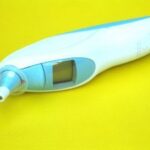Fevers are common in babies and if you are a new mother, nothing can drive you into a panic faster than touching your baby and realizing that he is burning hot. Even more worrying is that most fevers tend to attack at night, making you assume the worst. Though fevers are rarely dangerous, sometimes the infection that causes them needs treating, so a few may actually be God-sent because it is a clear indication that your child is unwell. Though most parents disregard it, it is important to have a thermometer at home to help you monitor your baby’s fever.
Spotting a fever
Your baby’s normal temperature should range between 36-37 degrees Celsius. If it gets to 37.5 degrees Celsius and exceeds it, then your child has a fever. Though it is easy to tell when your child has a high temperature by using your palm, the most accurate way of determining this is by using a thermometer. However, if you don’t have one, feel his chest and the back of his neck, and if his skin feels hot, sticky and his face is flashed, then he is probably running a fever. Other indications are listlessness, crying a lot and refusing to feed.
Why your baby gets frequent fevers
Your baby’s temperature regulating system, which includes sweat glands, is not yet fully developed and he/she therefore gets too hot or too cold more quickly than an adult could. This means that he/she will be more susceptible to infections. Infections that cause fever include chickenpox and roseola. Immunizations can also trigger a sudden rise in body temperature. Though rare, a fever can also be a sign of serious illness such as meningitis or encephalitis, which is brain inflammation caused by a virus.
Fever complications
High temperatures can cause dehydration especially if your baby has not been feeding well. Dehydration is dangerous and will need urgent treatment. High fever may also cause convulsions or fits in babies. Besides this, several studies have linked cot death with temperatures that are too high due to either illness or being wrapped too warmly.
Identifying a fever fit
A fever fit is also known as febrile convulsion and may occur when your child’s temperature rises very quickly. Normally, convulsions take place within 24 hours of a viral infection such as sore throat, or bacterial infection such as chest and ear infection. Fever fits also run in the family.
Signs of a fever fit
-Your child will momentarily lose consciousness and his body may go rigid
-His arms and legs may twitch and jerk
-Eyes may roll upwards
Most fits are over within a minute.
Giving first-aid
-Take him to hospital if he suffers a fit for the first time
-Do not try to hold him down. Let the convulsions subside
-Never try to wedge his mouth open to prevent him from biting his tongue because you are likely to cause more harm than good
-Note the time the fit begins to ascertain how long it lasts. If it lasts longer than a few minutes, consider it an emergency
-If your child is under a year-old and suffers a fit, take him to hospital
-To be on the safe side, once the fit subsides, take him to hospital
Treating fever at home
There are steps you can take to help bring down your baby’s fever in the comfort of your home. The first thing you should do is strip him down his nappy then sponge his face and body using lukewarm water. If your baby is over three months old, give him a dose of infant paracetamol or ibuprofen. Fluids such as breast milk or water will help prevent dehydration. Cover him with light bedding when you put him to bed.
It is an emergency when…
-High temperature is accompanied by a rash, bulging soft spot, paleness, and the baby is refusing to feed. These may be an indication of meningitis.
-Your baby suffers a fever fit
-Turns pale and looks weak or floppy
-Your three-month-old baby develops a fever
-His/Her temperature doesn’t come down after giving him the correct dose of infant paracetamol.


